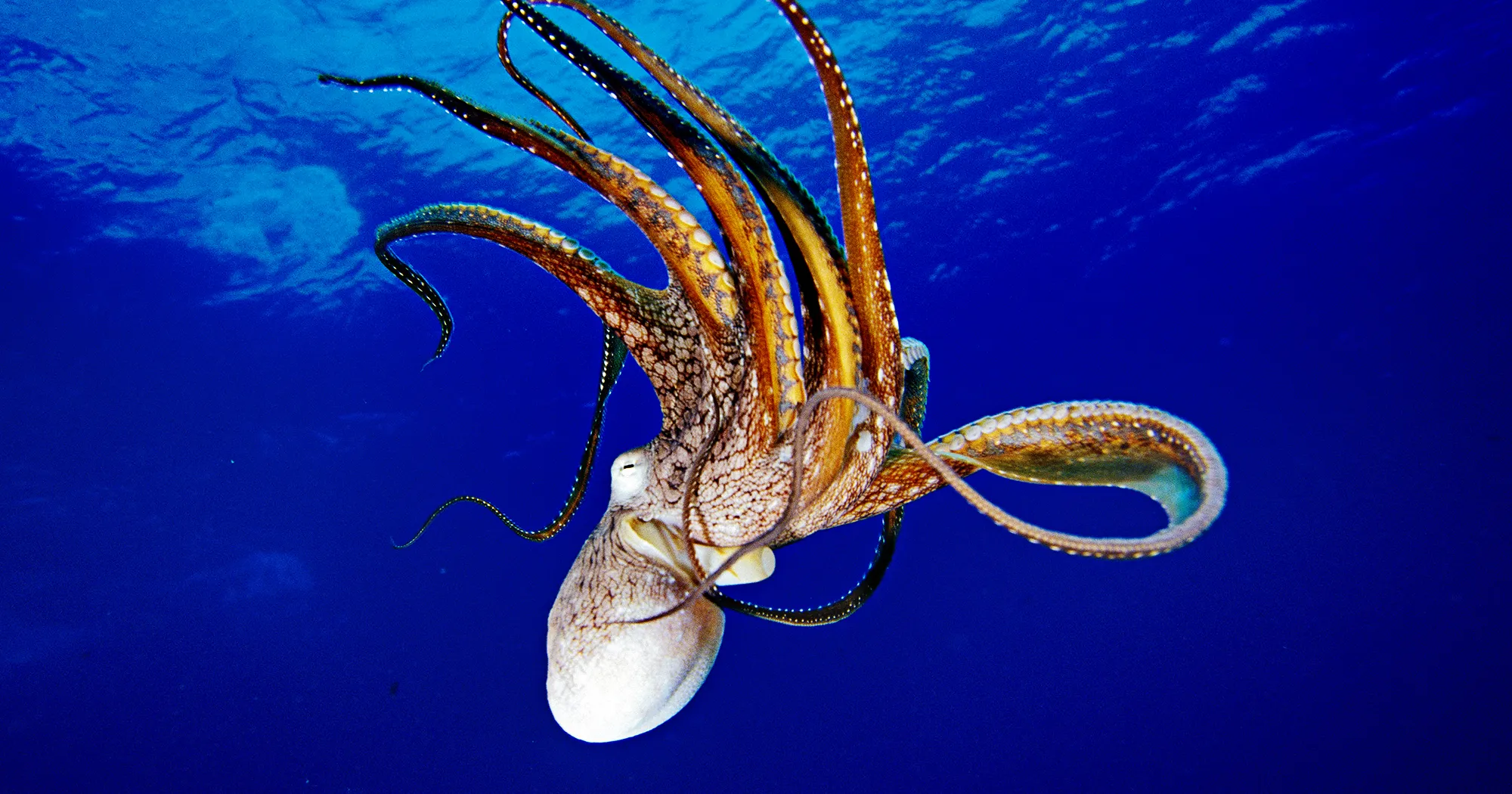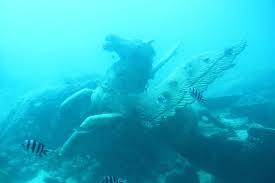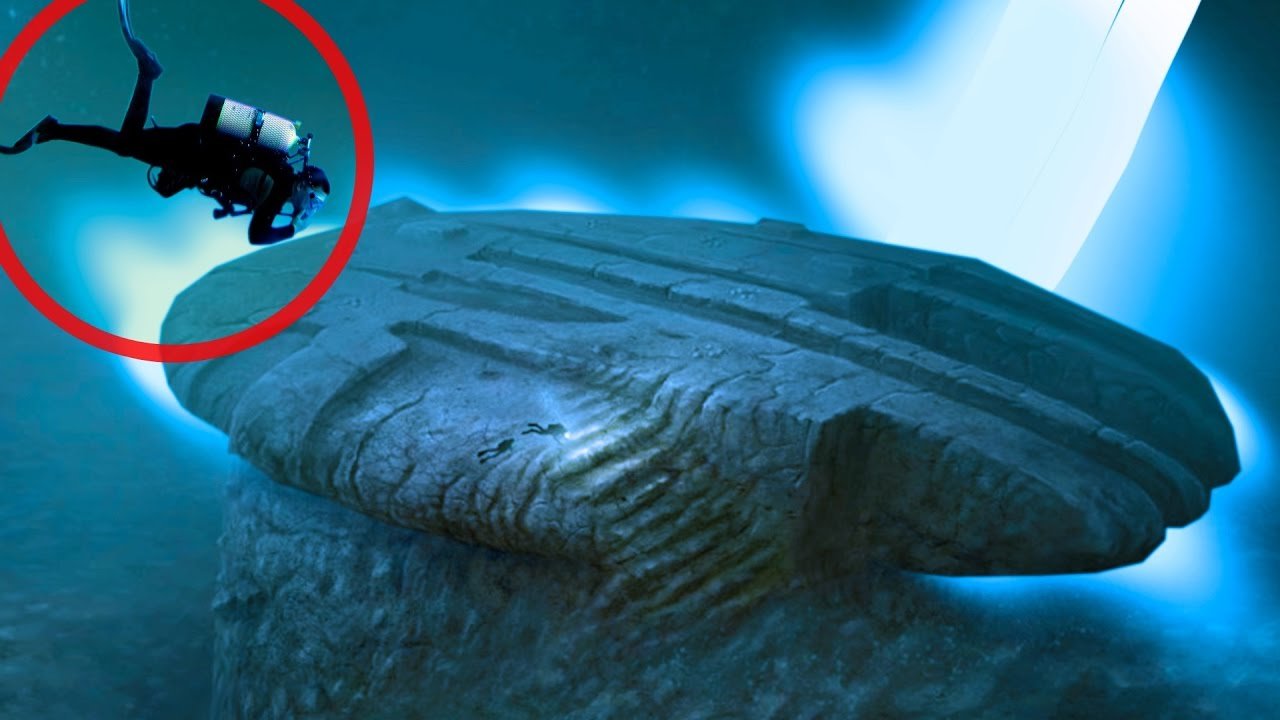The sea is a vast and mysterious environment, which often hides strange and unexpected surprises. Here are some strange things that have been found in the ocean:

- Deep sea creatures: The depths of the ocean are home to lots of strange and supernatural creatures that have evolved to survive in extreme conditions, like the anglerfish with its bioluminescent charms, with its extendable jaws the gulper eel, and the vampire squid with their unique feeding habits.
- Giant Squid and Colossal Squid: These giant cephalopods with eyes the size of dinner plates have long captivated the imagination. Rarely seen alive, they have been found washed up on shore or entangled in fishing nets, providing glimpses of their elusive world.
- Mysterious Shipwrecks: Shipwrecks are time capsules that hold stories of bygone eras. Some, such as the RMS Titanic, have become famous for their tragic history, while others remain undiscovered, waiting for their secrets to be revealed.
- Deep Sea Volcanoes and Hydrothermal Vents: These underwater geological features support unique ecosystems teeming with life adapted to extreme temperatures and chemical conditions. They often host species found nowhere else on Earth.
- Bioluminescent Plankton: Some types of plankton, such as dinoflagellates, emit light when disturbed, producing a mesmerizing sight known as a bioluminescent sea or “milky sea.” These events can transform the ocean surface into a dazzling sight.
- Sunken Cities and Ancient Ruins: Throughout history, coastal cities have been destroyed by rising sea levels, earthquakes, and other natural disasters. Archaeological expeditions have unearthed submerged cities such as Pavlopetri in Greece and Dwarka in India, providing insight into ancient civilizations.
- Marine Debris and Ghost Nets: Unfortunately the ocean is littered with man-made debris, including discarded fishing equipment such as ghost nets, which can entangle marine life long after being discarded. Keep.
- Giant Sea Animals: The largest animals on Earth, from the giant blue whale to the giant whale shark, the ocean is home to giants that inspire awe and wonder.
- Underwater Caves and Sinkholes: These hidden geological formations can harbor unique ecosystems and even ancient fossils, providing scientists valuable insights into Earth’s history.
- Lost Artifacts and Treasures: The sea has claimed countless treasures over the centuries, from ancient artifacts to sunken ships laden with gold and silver. Treasure hunters continue to search the depths for these elusive prizes.
These are just a few examples of the strange and fascinating things found in the ocean, reminding us of the enduring allure and mystery of the ocean.
Definitely! Here’s a detailed exploration of the weird and fascinating things found in the sea, going deeper into each category and providing additional examples, details, and insight:

,
1. Deep sea creatures:
The deep sea, often considered Earth’s last frontier, is home to a vast array of bizarre and fascinating creatures that have adapted to survive in extreme conditions of pressure, darkness and cold. Among these creatures are:
- Anglerfish: Known for the bioluminescent lure that hangs from its head, the anglerfish uses this adaptation to attract prey in the darkness of the deep sea. These fish have a unique reproductive strategy where smaller males attach themselves to larger females and essentially become parasites.
- Gulper Eel: With its large mouth and extendable jaws, the Gulper Eel can swallow prey much larger than itself. It is able to expand its stomach to accommodate prey, earning it the nickname “pelican eel”.
- Vampire Squid: Despite its ominous name, the vampire squid is harmless to humans. It lives in the deep sea and has distinctive red eyes and a cloak-like web between its arms. It is an ancient species that represents a unique evolutionary lineage among cephalopods.
- Deep Sea Jellyfish: Many species of jellyfish inhabit the deep sea, some with mesmerizing bioluminescent displays. One such example is the deep-sea jellyfish Atola wyvilii, which emits a series of flashes when threatened, presumably to attract larger predators to scare off their attackers.
- Deep-sea Octopus: Deep-sea octopuses exhibit fascinating adaptations, such as transparent skin, which allows them to blend seamlessly into their environment. Some species, like the Dumbo octopus, have ear-like fins that they use for swimming.
- Deep Sea Worms: Tube worms found near hydrothermal vents are one of the most extreme examples of deep sea life. These insects rely on symbiotic bacteria to convert chemicals from the pores into energy through a process called chemosynthesis.
- Barreleye Fish: Also known as spookfish, barreleye fish have transparent heads with tubular eyes that can rotate to look straight upward. This adaptation allows them to recognize potential prey or predators in the darkness above them.
The deep sea remains largely unexplored, and with advances in technology, scientists continue to discover new species and uncover the secrets of this vast and mysterious region.
2. Giant Squid and Giant Squid:
The giant squid (Architeuthis dux) and the colossal squid (Mesonychoteuthis hamiltoni) are the two largest invertebrates on Earth and have long captured the imagination of scientists and storytellers. Although they live in the deep sea, they sometimes wash ashore or are captured by deep-sea fishermen, providing a rare glimpse of their elusive life.
- Giant Squid: Giant squid can grow up to 43 feet (13 meters) long, with eyes the size of dinner plates. Despite their enormous size, they are elusive creatures, living at depths up to 3,000 feet (900 m) below the surface. Their large eyes probably help them detect bioluminescent prey in the dark.
- Giant Squid: Giant squid are even larger than the giant squid, with specimens reaching over 45 feet (14 m) in length. They have powerful tentacles equipped with rotating spines, which they use to capture and subdue prey. Unlike the giant squid, which has a long, slender body, the giant squid has a more robust build.
Both species have inspired myths and legends throughout history, with tales of sea monsters and the Kraken hidden in the depths. However, scientific studies have shed light on these mysterious creatures, revealing their remarkable adaptations and behavior.

3. Mysterious Shipwreck:
Shipwrecks are time capsules that provide insight into human history, maritime culture and technological progress. They can be found scattered throughout the oceans around the world, protected by the cool, dark depths. Some of the most famous ships include:
- RMS Titanic: Perhaps the most famous shipwreck of all time, the RMS Titanic sank after hitting an iceberg on its maiden voyage in 1912. The ship was located 12,000 feet (3,800 m) below the surface of the North Atlantic. Has captivated the public’s imagination for decades.
- HMS Erebus and HMS Terror: These two ships of the British Royal Navy, under the command of Sir John Franklin, disappeared in 1845 during an Arctic expedition in search of the Northwest Passage. Wrecks were discovered in its cold waters in recent years. Canadian Arctic Archipelago.
- Vasa: The Vasa was a Swedish warship that sank on its maiden voyage in 1628. Despite its short-lived voyage, the remarkably well-preserved wreck was salvaged in the 20th century and is now on stock.
Shipwrecks offer a glimpse into the past, providing valuable archaeological and historical information. They also serve as underwater habitats for marine life, fostering unique ecosystems on the sea floor.

- Deep Sea Volcanoes and Hydrothermal Vents:
The ocean floor is dotted with volcanic peaks and hydrothermal vents, where magma from the Earth’s mantle interacts with seawater, creating extreme conditions of heat and pressure. These environments support unique ecosystems called hydrothermal vent communities, which include:
Tube Worms: Tube worms are among the most iconic inhabitants of hydrothermal vent ecosystems. These strange creatures have no mouth or digestive system, but they rely on symbiotic bacteria present in their bodies to convert chemicals from pores into energy.
Giant clams: Found near hydrothermal vents, giant clams can reach sizes over three feet (one meter) in length. Unlike their shallow-water relatives, which depend on photosynthesis for energy, these clams obtain nutrients from chemosynthetic bacteria living in their tissues.
Riftia worms: Riftia worms, also known as giant tube worms, form dense colonies around hydrothermal vents. They can reach a length of up to six feet (two metres) and have bright red fins that spread out in the water to capture nutrients.
Deep-sea shrimp: Shrimp species adapted to life near hydrothermal vents exhibit unique physiological adaptations, such as heat-resistant enzymes and specialized respiratory systems. These shrimp are an important part of the vent community’s food web.
Bacterial mats: Hydrothermal vents are surrounded by dense mats of bacteria that thrive on chemicals released from the vent. These bacteria form the basis of the vent ecosystem’s food chain, supporting a wide variety of organisms.

Hydrothermal vents are oases of life in the deep sea, hosting species found nowhere else on Earth. They also play an important role in global geochemical cycles, influencing ocean chemistry and climate.
Also Read :-


